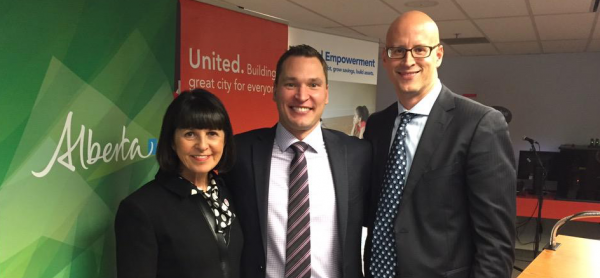There are differing opinions on payday loans and the government of Alberta wants to hear yours. One thing is certain though, they are extremely expensive and targeted at Albertans living in poverty.
For many Albertans who need quick cash a payday loan may appear to be the only or best option. Seldom is this the case. On the face of it, it looks like a quick way out. This is exactly how the loans are marketed: quick cash with the loan being done and over with after two weeks. In reality this is not how it works. If you have a bad credit you’ll need to fix bad credit first. The average borrower takes out 8 loans before exiting the cycle .
After Service Alberta analyzes the results they will lead in person consultations with lenders, borrowers, and other stakeholders to determine the path forward for regulation.
Payday loans are loans of less than $1500 with a term of less than 62 days. The average loan is $300 over 14 days. In Alberta, lenders can charge up to $23 for every $100 borrowed over the loan period.
This may look like a 23 percent interest rate, it’s not. It’s 23 percent for that two week term. In Canada, we compare the cost of financial products through the Annual Percentage Rate (APR) or annual interest. The APR on the average payday loan? 600 percent. Compare that to your credit card at 18 percent or car loan at 5 percent. No matter how you slice it payday loans are an incredibly expensive way to borrow money. More information on check loans and financial advice on this site.
The people who go to a payday lender are largely the working poor but many borrowers could be receiving government benefits like Assured Income for the Severely Handicapped or Income Support. Bottom line: The people who can least afford credit are paying the most to access it. Income support dollars could be going to pay for payday loan interest. In Calgary, there are 82 payday loan stores, 69 of them are in high poverty areas of the city. Payday lenders know their target market.
So what can improve the regulations? Lowering the interest rates would be a start. Alberta has the second highest allowable rates in the country ($23 per $100). Manitoba charges only $17 per $100. This reduces the cost to the borrower but interest rates remain in the triple digits.
Another option is to mandate installment payments on payday loans. Currently, the full amount of the loan must be repaid in one payment. For many this means giving up the majority of their paycheque and taking out a new payday loan immediately to tide over the shortfall. Installment payments would allow for people to repay the loan over a longer period of time and so that payments take up less of their paycheque. This reduces the need for immediate re-borrowing.
What Alberta should not do is ban payday lenders outright. In the 14 American states where payday loans are illegal there is an unregulated industry of lenders who charge even higher rates. Not only this but choking off the supply of short-term, small dollar credit does not diminish the demand. Demand must also be addressed through competing products with reasonable rates of interest. This is already being done in Calgary with Momentum and First Calgary Financial offering a competing product to a payday loan, known as the Cash Crunch loan, which offers credit at a 12 percent annual interest rate.
This is by no means an exhaustive list of what the provincial government can do to better protect consumers and regulate this industry. It is not only up to the provincial government to regulate this industry. Municipalities can regulate this industry through land use and licensing tools available to them. Calgary is already pursuing this, other municipalities can and have jumped on board, but not yet Edmonton.
Learn more about the high costs of payday loans, and policy options, here. Take the survey and let the Government of Alberta know what you think of payday loans.
Mik

